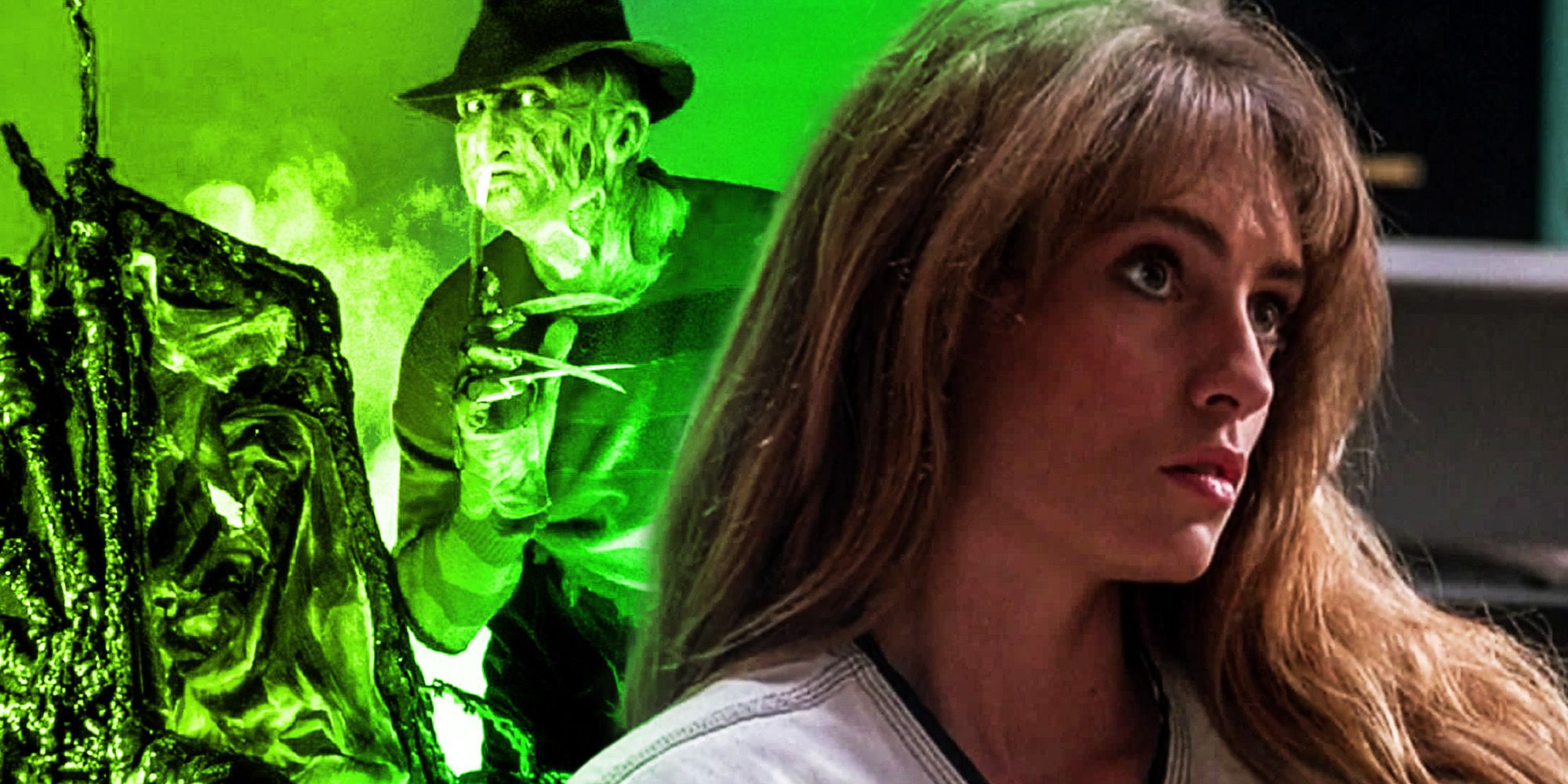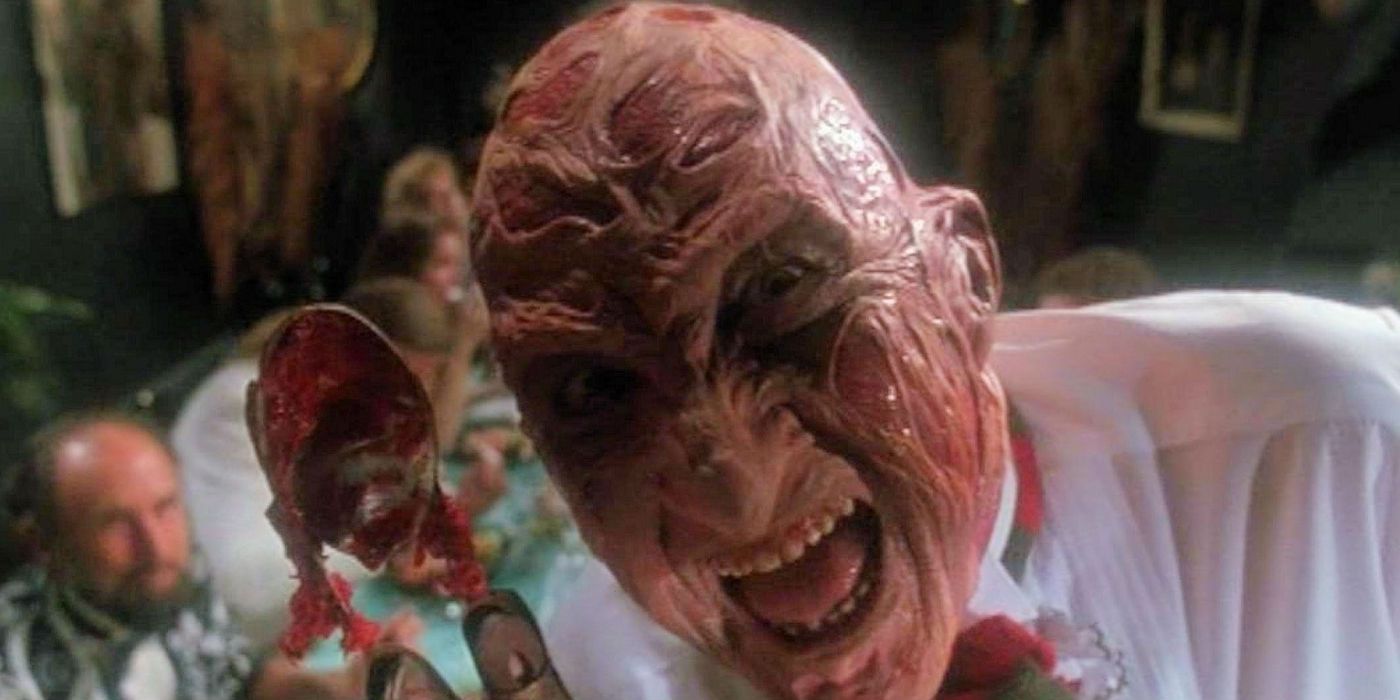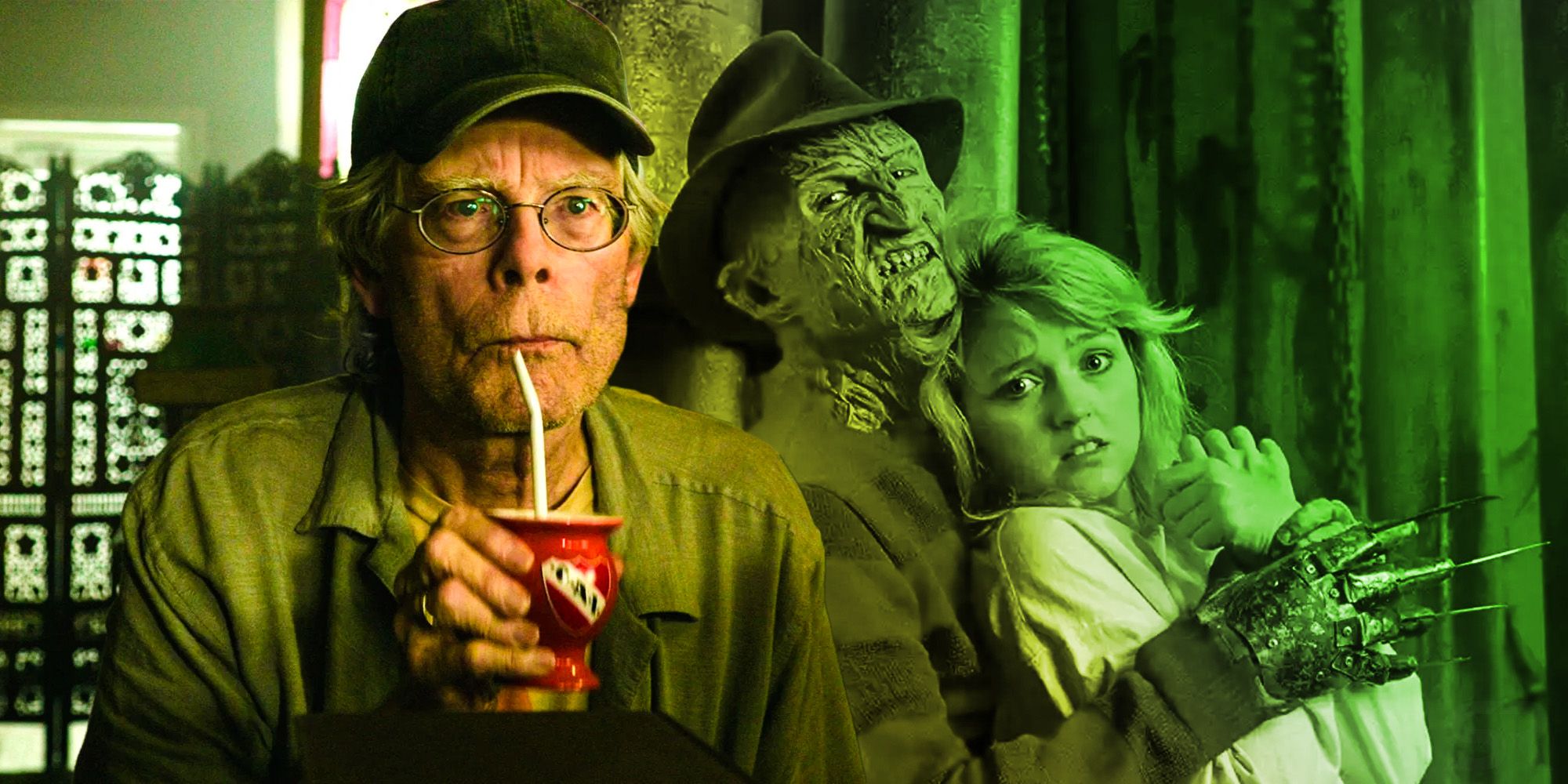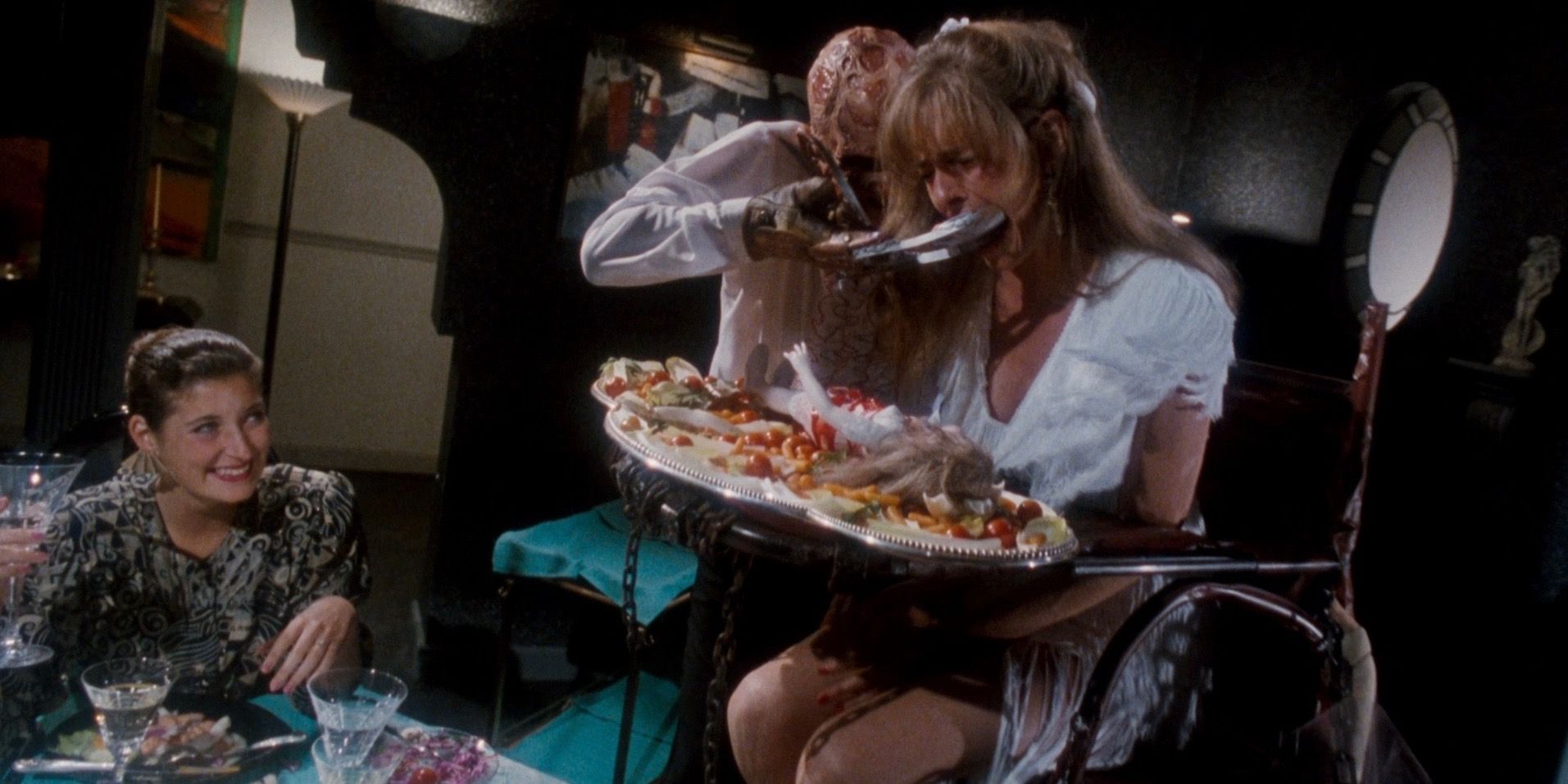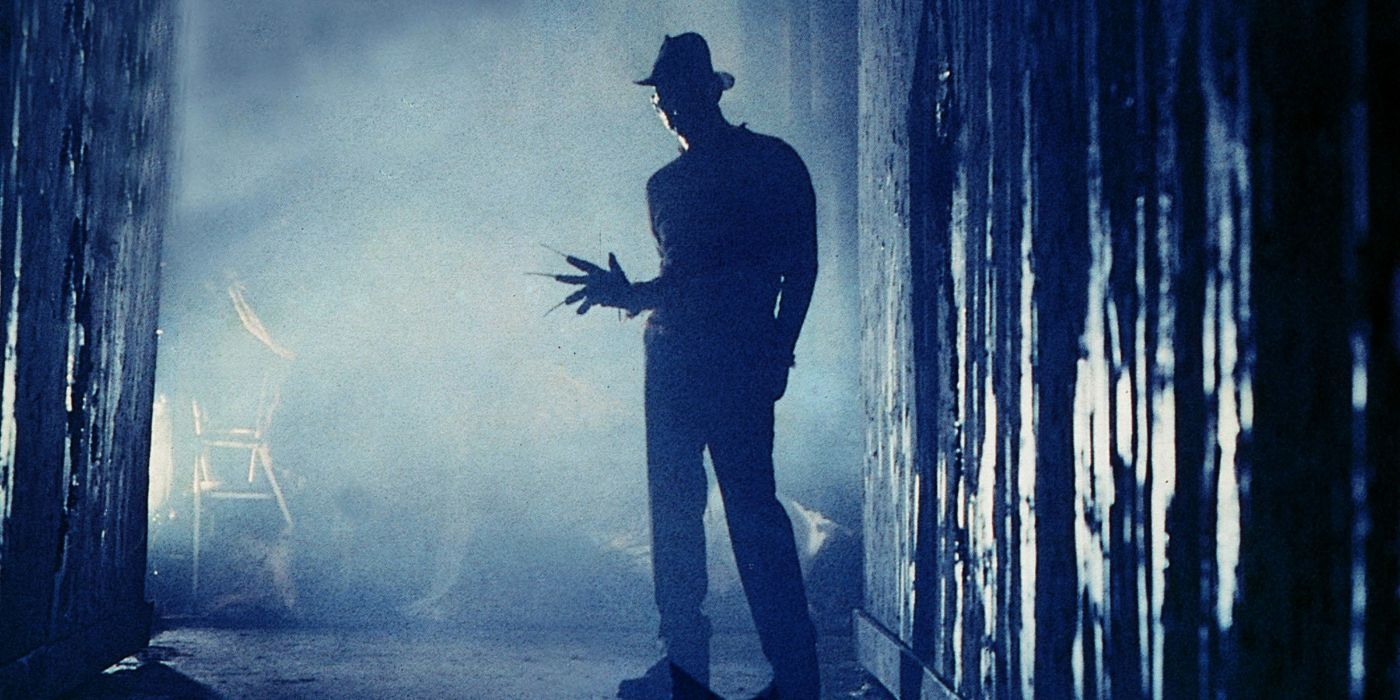Nightmare On Elm Street 5: The Dream Child is neither the best nor the worst outing of Freddy Krueger’s storied screen career, but could the sequel’s original plans have made for a stronger installment? WhenWes Craven earned rave reviews for his hit teen horror Scream in 1996, it was not the first time the genre legend had revived the fortunes of the slasher sub-genre. By 1984, a slew of Halloween rip-offs released in the wake of John Carpenter’s 1978 sleeper hit had ensured audiences were jaded of seeing hulking, wordless murderers offing annoying teens.
However, with A Nightmare On Elm Street, Craven was able to offer a new sort of slasher that made viewers afraid to enter theatres again. Even though the filmmaker originally envisioned him as a Friday the 13th-style slasher villain, Freddy Krueger ended up being anything but. The badly burned caretaker/child killer was a smaller, more talkative type of villain that slasher fans weren’t used to and his method of hunting his victims was equally inventive. Elm St saw Freddy offing teens in the supposed safety of their dreams, with their nightmares having very real - and often bloody—consequences in the waking world.
This addition of a paranormal angle made Craven’s slasher a huge success, and soon after a host of sequels were pumped out of the premise, with Craven’s involvement varying depending on the movie. Craven offered story ideas for the third film but his original concept was largely ignored, and by the fourth film, helmer Renny Harlin had the bright idea to make Freddy funny for A Nightmare On Elm Street 4. This change was met with mixed reviews, but it was the fifth installment, 1989’s Nightmare On Elm Street: The Dream Child, where things truly slid downhill in terms of audience feedback. So, was the movie’s original pitch any better than what audiences ended up getting?
The Missing Character (& Death) Of Ginger
Not a lot of detail featured in the first draft of Nightmare On Elm Street: The Dream Child made it onto the big-screen intact, which is a shame when the original screenplay featured one of Freddy’s most harrowing and disturbing kills yet. This script featured a character named Ginger (who would eventually become the finished film’s Greta, with a lot of alteration), a doomed, wannabe model whose story took a tragic turn. Bullied into bulimia by her sleazy manager Buddy, the aspiring model suffered a much better Nightmare On Elm Street death than Dream Child's Greta when she awoke from one dream, only to find she was still stuck in another.
Ginger dreamed that she was dancing to iconic ‘80s hitmakers INXS live on-air on MTV, only for Freddy to crop up and, darkly exploiting her deepest fears, turn her into a pig-like monster that can’t stop eating voraciously. Ginger awoke from this horrific, grotesque nightmare to find herself in the safety of her bed - only for Krueger to then gut her just when she thought she was back in reality and safely out of reach from his razor-tipped hand. There was, however, one dark upside to Ginger’s gruesome death - like Rod in the first film, here the more deserving abusive manager Buddy was blamed for her demise.
Frank Miller (& Stephen King’s) Nightmare On Elm Street 5
Directing duties on Nightmare On Elm Street: The Dream Child eventually went to Predator 2 helmer Stephen Hopkins (who toyed with the idea of making the movie PG-13, which would have been a franchise first). However, many notable names were approached before Hopkin’s late-in-the-day hiring. Legendary comic book artist Frank Miller, who would go on to write Sin City, was offered the job of shooting Freddy’s fifth outing. Unfortunately, audiences never got to see what surreal and terrifying nightmares the artist would have come up with for the sequel, as he was busy scripting a sequel to Paul Verhoeven’s Robocop at the time of shooting. Meanwhile, horror royalty Stephen King was also in the running to write and direct the fifth installment of the Nightmare On Elm Street series, but he ultimately was not approached by New Line as he had sworn off directing since his first feature film, 1986’s Maximum Overdrive, proved a flop with audiences and critics alike.
Greta’s Gorier Original Death
While her filmed death may not have been as ambitious as Ginger’s scripted demise, Greta’s original killing was still more memorable than what viewers eventually ended up with. Around the time the fifth Nightmare On Elm Street was released, the MPAA had a shiny new rating they were desperate to slap on horror movies in the form of the dreaded NC-17. The commercial inviability of being saddled with this rating led the filmmakers to cut down gory footage of Greta being fed her own guts unbeknownst to her. What audiences ended up seeing was the same essential premise, but stripped of its bloody intensity, the scene was as unintentionally funny as the sequel Freddy's Dead's parade of odd celebrity cameos.
Freddy’s Sympathetic Backstory
According to original draft co-writer John Skipp, his early script drafts of Nightmare On Elm Street: The Dream Child’s script depicted Freddy’s traumatic childhood mistreatment at the hands of abusive nuns who left him feeling shameful, stigmatized, or “twisted at the root,” as the writer put it. It’s a shame the backstory was cut, with Skipp saying that only a single line of his and co-writer Craig Spector’s draft made it into the finished film. Seeing the abusive background that Freddy grew up in and witnessing his mistreatment firsthand could have made the monstrous figure more rounded or even tragic, something 2010’s wrong-headed Nightmare On Elm Street remake attempted with its original opening. However, the directors opted to excise the poignant origins of Freddy’s sadism, adding in more over-the-top kills instead of fleshing out the slasher’s backstory further, after the third movie had hinted at his troubled origins. The decision was likely intended to make the sequel more accessible and fun, but the choice backfired. Instead, viewers got what many still view as one of the weakest entries into the Nightmare On Elm Street series.

